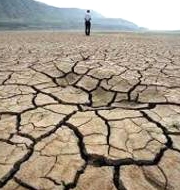2023 Global Water Monitor Report
The 2023 Global Water Monitor report reveals over 77 countries endured their highest average annual temperatures in the last 45 years.
The unprecedented heat manifested across all seasons, influencing precipitation patterns along with water budgets.
Warming Effects on Weather Systems
Study authors note the global water cycle last year was affected by an emerging El Nino phase shifting tropical rainfall zones.
Rising ocean temperatures due to climate change also boosted cyclone strength and rainfall intensity, inflicting severe human and economic costs through flooding.
Soil Moisture Trends
Despite hotter and drier air, annual soil moisture levels increased by 3.5% above 1998-2005 averages due to multiple possible factors like evolving farm practices.
But total terrestrial water storage including snow, ice and groundwater still declined across January-September 2022 versus the early 2000s.
Vegetation Changes
Meanwhile, global land vegetation vigor surpassed 2001-2005 baselines by 4.7% as warming aids crops in some cold regions while fertilization effects from carbon dioxide stimulate plant growth.
Extreme Hydrological Events
The report warns of climbing extremes in high or low rainfall and worsening droughts or floods globally even as average precipitation stayed near-normal overall last year.
Surface water extents like lakes and rivers also witnessed the second lowest coverage in 20 years.
Outlook for 2024
Looking ahead, higher rainfall is likely for parts of Africa and Asia but reduced for Americas, Southern Africa and Australia.
Drought risks appear specifically pronounced for the Western Hemisphere while flooding challenges may arise in India or East Africa.
Month: Current Affairs - January, 2024
Category: Environment Current Affairs








